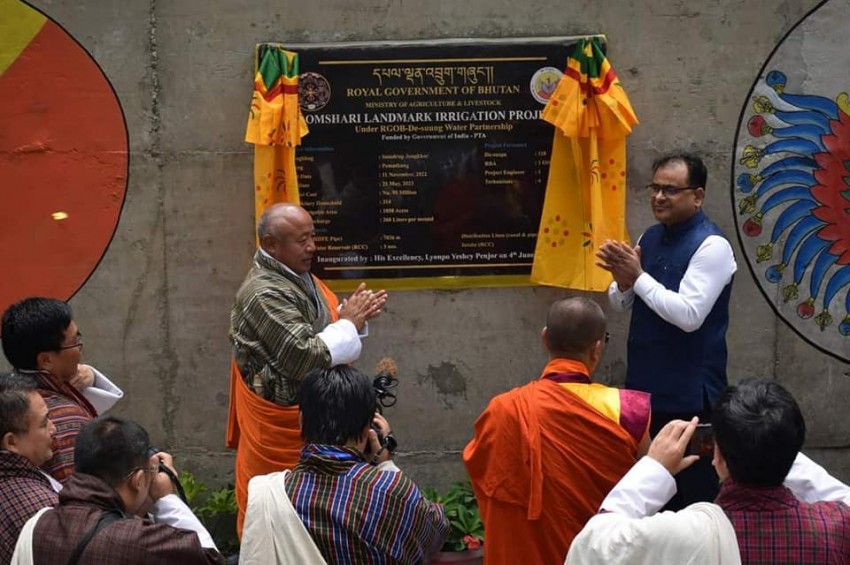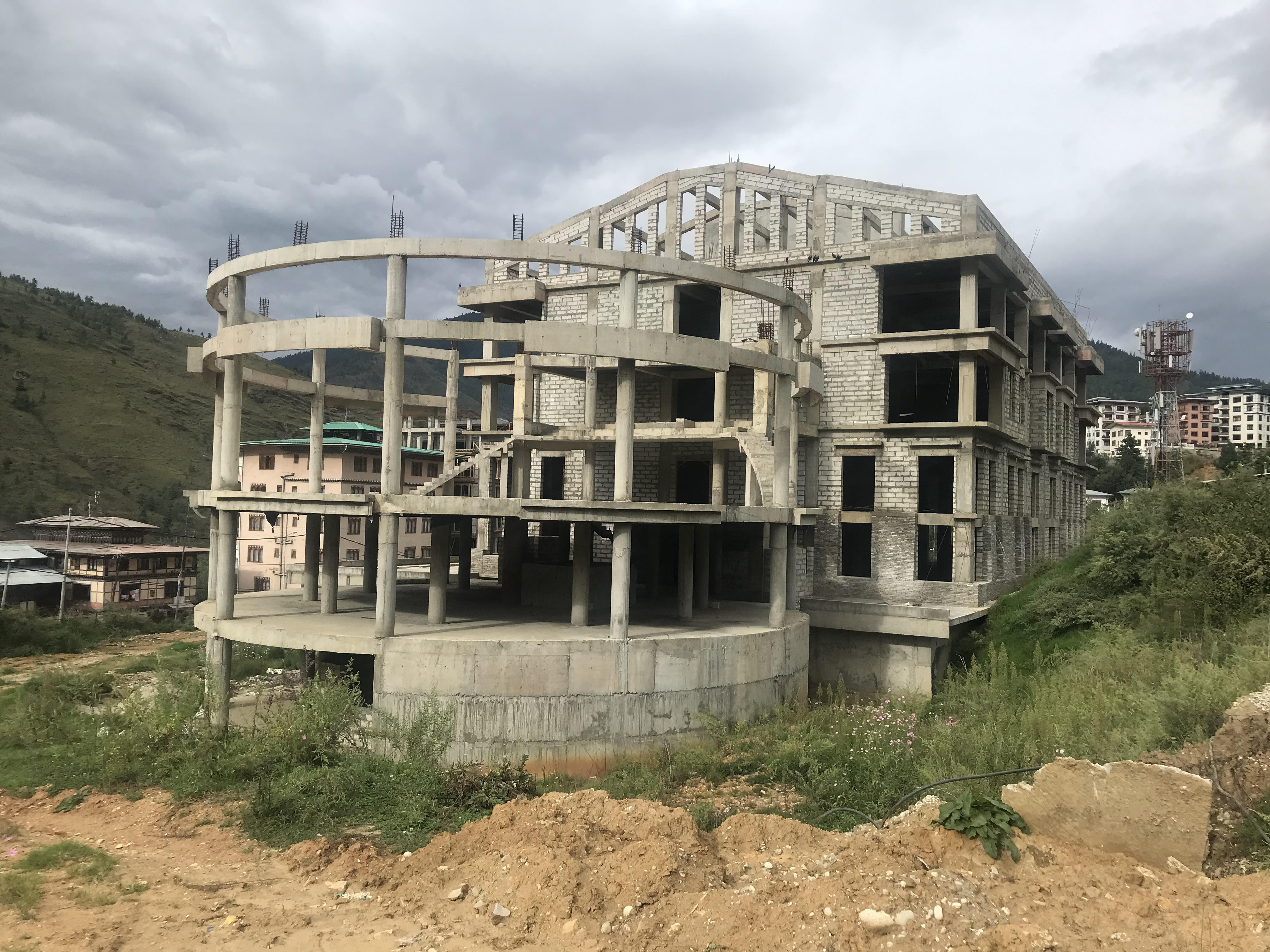The World Bank's latest Global Economic Prospects Report for 2024 has shed light on Bhutan's economic trajectory, projecting a notable slowdown in growth for the fiscal year 2023-24. According to the report, Bhutan's Gross Domestic Product (GDP) is anticipated to expand at a rate of 4 percent, marking a decrease from the previous fiscal year's growth of 4.6 percent.
This forecast signifies a revision from the World Bank's earlier estimate in June 2017, which had pegged Bhutan's growth at 3.1 percent. The upward adjustment by 0.9 percentage points suggests a more optimistic outlook, albeit with tempered expectations.
The report identifies several factors contributing to the anticipated deceleration in economic growth. Chief among them are declines in public investment and capital spending, indicating potential challenges in infrastructure development and government-led initiatives.
However, amidst these headwinds, Bhutan's economy is poised to benefit from the resilience exhibited by the tourism sector. Strong performance in tourism-related services is expected to buoy economic activity, offering a counterbalance to the slowdown in other areas.
Commenting on the findings, World Bank officials underscored the importance of strategic policymaking and targeted interventions to address the challenges posed by declining public investment while leveraging the strengths of sectors such as tourism to sustain economic momentum.
The projected growth rate of 4 percent for FY 2023-24 underscores the need for continued vigilance and proactive measures to navigate the evolving economic landscape both domestically and globally.
As Bhutan charts its path forward, policymakers, businesses, and stakeholders will need to collaborate closely to ensure sustainable growth and resilience in the face of emerging challenges and opportunities.
Global tourism’s recovery has been a boon for Bhutan, with 103,000 tourist arrivals last year, surpassing the Department of Tourism’s target of 98,000 tourists for the year. During the same period, Bhutan also earned a record revenue of USD 26 million from the sustainable development fee.
The Bank projects a 4.6 percent economic growth rate in the upcoming fiscal year 2024–25. This is because the industrial and service sectors have begun to revive, and by the end of the year, the Punatsangchhu-II plant, a new hydroelectric facility, will be put into service.
The Bank's growth estimate from June last year is 0.3 percentage points higher than this expectation.
As per the December 2023 report by the Asian Development Bank (ADB), Bhutan's economy is anticipated to expand by 4.4 percent this year. The tourism sector's comeback and the Nikachhu power plant's start of operations are credited with this rise.
However, the ADB mentioned that last year’s growth projection of 4.3 percent was slightly reduced due to adverse weather conditions affecting crop production and hydropower generation.
Last year, Bhutan’s hydropower generation decreased by 2 percent compared to the previous year. The total electricity generated was 10,534.81 million units (MU) last year, which is 218.09 MU less than the 10,749.63 MU generated in 2022.
Due to the loan restriction for commercial housing and hotel projects in June of last year, the construction industry is currently experiencing difficulties. The goal of this suspension was to protect foreign exchange reserves and address non-performing loans.
For India, the World Bank has forecasted economic growth rates of 6.3 percent in 2023–24 and 6.4 percent in 2024–25 fiscal years.
During the same period, the economy of Bangladesh is expected to grow by 5.6 percent and 5.8 percent. Nepal’s growth is projected at 3.9 percent, while Pakistan’s growth is forecasted at 1.7 percent for the fiscal year 2023-24.
After growing by 2.6 percent last year, the global economy is predicted to contract for the third year in a row this year, expanding by 2.4 percent.
Advanced economies are expected to grow by 1.2 percent this year, while developing economies are expected to grow at a rate of 3.9 percent. This is in contrast to last year's growth of 1.5 percent.
This forecast signifies a revision from the World Bank's earlier estimate in June 2017, which had pegged Bhutan's growth at 3.1 percent. The upward adjustment by 0.9 percentage points suggests a more optimistic outlook, albeit with tempered expectations.
The report identifies several factors contributing to the anticipated deceleration in economic growth. Chief among them are declines in public investment and capital spending, indicating potential challenges in infrastructure development and government-led initiatives.
However, amidst these headwinds, Bhutan's economy is poised to benefit from the resilience exhibited by the tourism sector. Strong performance in tourism-related services is expected to buoy economic activity, offering a counterbalance to the slowdown in other areas.
Commenting on the findings, World Bank officials underscored the importance of strategic policymaking and targeted interventions to address the challenges posed by declining public investment while leveraging the strengths of sectors such as tourism to sustain economic momentum.
The projected growth rate of 4 percent for FY 2023-24 underscores the need for continued vigilance and proactive measures to navigate the evolving economic landscape both domestically and globally.
As Bhutan charts its path forward, policymakers, businesses, and stakeholders will need to collaborate closely to ensure sustainable growth and resilience in the face of emerging challenges and opportunities.
Global tourism’s recovery has been a boon for Bhutan, with 103,000 tourist arrivals last year, surpassing the Department of Tourism’s target of 98,000 tourists for the year. During the same period, Bhutan also earned a record revenue of USD 26 million from the sustainable development fee.
The Bank projects a 4.6 percent economic growth rate in the upcoming fiscal year 2024–25. This is because the industrial and service sectors have begun to revive, and by the end of the year, the Punatsangchhu-II plant, a new hydroelectric facility, will be put into service.
The Bank's growth estimate from June last year is 0.3 percentage points higher than this expectation.
As per the December 2023 report by the Asian Development Bank (ADB), Bhutan's economy is anticipated to expand by 4.4 percent this year. The tourism sector's comeback and the Nikachhu power plant's start of operations are credited with this rise.
However, the ADB mentioned that last year’s growth projection of 4.3 percent was slightly reduced due to adverse weather conditions affecting crop production and hydropower generation.
Last year, Bhutan’s hydropower generation decreased by 2 percent compared to the previous year. The total electricity generated was 10,534.81 million units (MU) last year, which is 218.09 MU less than the 10,749.63 MU generated in 2022.
Due to the loan restriction for commercial housing and hotel projects in June of last year, the construction industry is currently experiencing difficulties. The goal of this suspension was to protect foreign exchange reserves and address non-performing loans.
For India, the World Bank has forecasted economic growth rates of 6.3 percent in 2023–24 and 6.4 percent in 2024–25 fiscal years.
During the same period, the economy of Bangladesh is expected to grow by 5.6 percent and 5.8 percent. Nepal’s growth is projected at 3.9 percent, while Pakistan’s growth is forecasted at 1.7 percent for the fiscal year 2023-24.
After growing by 2.6 percent last year, the global economy is predicted to contract for the third year in a row this year, expanding by 2.4 percent.
Advanced economies are expected to grow by 1.2 percent this year, while developing economies are expected to grow at a rate of 3.9 percent. This is in contrast to last year's growth of 1.5 percent.














